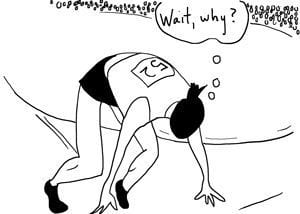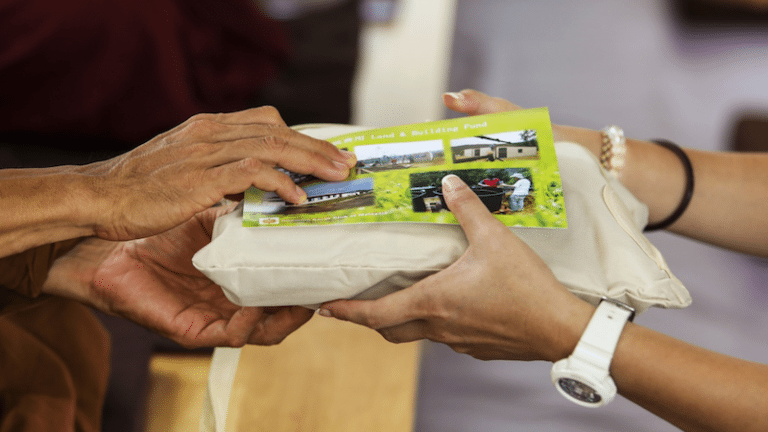This post is a part of the Thriving Learner Series from AffectiveLiving, aimed at helping students find purpose and happiness. File this one under Accomplishment Strategies.
Imagine hundreds of jigsaw puzzle pieces strewn across a table, waiting to be put together by a student. There are numerous shapes, sizes, and colors. Some puzzle pieces are flipped upside down. The student searches for the box that shows what the completed puzzle should look like. But that box has gone missing. The student has no guiding image, no structure, no model to guide his work.
On top of that, the teacher makes this startling announcement:
“If you do really well on this state-mandated puzzle, our school can be ranked higher on a list that doesn’t matter to you! If you do well, you’ll go on to college where you can spend four more years solving even more of these puzzles, which will only put you in debt for a few thousand dollars. You’ll also help us keep our jobs. (You want us to keep our jobs, don’t you?) So, kids, you better work real hard on that puzzle—real hard. Be gritty because if you work harder you’ll solve it better.”
This is what school is like for students who don’t have goals. School is hundreds of inconsequential moments thrown together without any particular purpose or relevance—puzzle pieces strewn across the table, or the assignment to keep at it, even without a picture of what “it” is.
The obstacle I’ve seen with the Grit Movement is that teachers focus too much on the “perseverance” part, talking ad nauseum about trying harder and not giving up. We often forget that a major component of grit is passion for “long-term goals.”
To talk about perseverance and passion without helping students see the bigger picture–the end goal of this puzzle-solving process —is not going to help them solve the puzzle any faster. Students need goals, large and small, easy and hard. They need to see how the little pieces fit within the larger puzzle. And, most of all, they need to find purpose in putting together the puzzle in the first place.
Our job is to help them see the bigger picture. Our job is to help them find the puzzles they want to solve, and then show how our content can help them solve their own puzzles.
Whether you teach high schoolers or pre-kindergartners, it is never too soon (or too late) to help students develop their passions, set and adjust goals, and increase their self-efficacy.
Here are five quick, easy strategies for making passion and goal-setting a part of your students’ puzzle-solving world.
1. Bucket Lists

Students go through the process of creating “bucket lists” of things they want to accomplish before they die. These lists are then shared, revisited, and posted to keep long-term, passionate goal-setting a present part of the classroom.
Why: One major obstacle to helping students develop grit is that they’re not spending enough time thinking about what they want to accomplish (i.e. forming goals). We can do better in helping students develop a vision—as well as help support them in taking the all-important first steps toward making a vision a reality.
2. Vision Boards
Similar to Bucket Lists, students develop visual images of what they want to accomplish in life.
Why: Many students have a narrow view of what success could look like because their vision is based only on what they see around them. Vision Boards can help students develop goals both more ambitious and more specific.
3. Meaning Missions
Students are given random, personalized missions that support their passions and/or “grand goals.” These missions are ungraded ways to help students take active steps in developing confidence and competence with their goals.
For example:
Art — “Your mission is to create a logo/design for our [name of club/organization] to be used on this year’s t-shirts. Make sure you logo includes their symbols (a micro- scope and a star).”
Fishing – “Your mission is to create a youtube video on how to bait a hook and clean a fish for beginners (particularly young children).”
Music – “Your mission is to create background music for our school’s announcements. Feel free to make it upbeat and use instrumentation that your peers would like.”
Helping others – “Your mission is to take the contents contained in this envelope [$5] and make the biggest, most positive impact possible on someone in our school.”
Video Games – “Your mission is to create a new video game concept for teenagers aged 14-18. Once completed, I’ll help you pitch your concept to the owners of S2 Games.”
Why: Students have a variety of passions and grand goals that may not fit within standardized curricula or graduation requirements. These passions, however, should still be acknowledged, cultivated, and supported no matter what class we teach. And students should take active, physical steps toward achieving those goals right away. Meaning Missions allow us to fuel students’ passions and goals by getting them to take the first steps now.
4. Transcendent Mission Statements
Students identify benefits and purpose beyond their immediate goals (to pass a test, for instance), such as improving geometry knowledge to improve problem solving skills.

Why: Since learning takes work and cognitive struggle, students need a larger purpose for investing their energy. Unfortunately, students (and teachers) often only focus on the immediate benefits like test scores and passing classes. Coaching students to find a more transcendent benefit can help them persevere and develop intrinsic reasons to progress on their academic goals. An interesting study led by David Yeager and Marlone Henderson of the University of Texas at Austin found that even brief, one-time interventions—teachers asking students to find transcendent purposes for learning—helped students become more engaged in their learning. The interventions also improved math and science grade-point averages over several months.
5. Future-Focus Friday
On a selected day of the week, set aside brief time to allow students to reflect upon their past goals, re-work existing goals, or set new ones.
Why: Gritty goals take continual work and effort in order to accomplish. And, often our first (or fortieth) attempt at accomplishing a goal doesn’t work. So, the more we allow space for students to assess their progress, tweak their goals, and get feedback and coaching, the more we help students develop motivation and self-efficacy.
If you want more ideas – and lesson plans – for using these and other accomplishment strategies, click on the link for the free ebook G-Words: 20 Strategies for Fostering Grit and Growth Mindset.
We can do better than just talk about what grit is. We can help students cultivate grit by making their goals a priority.

